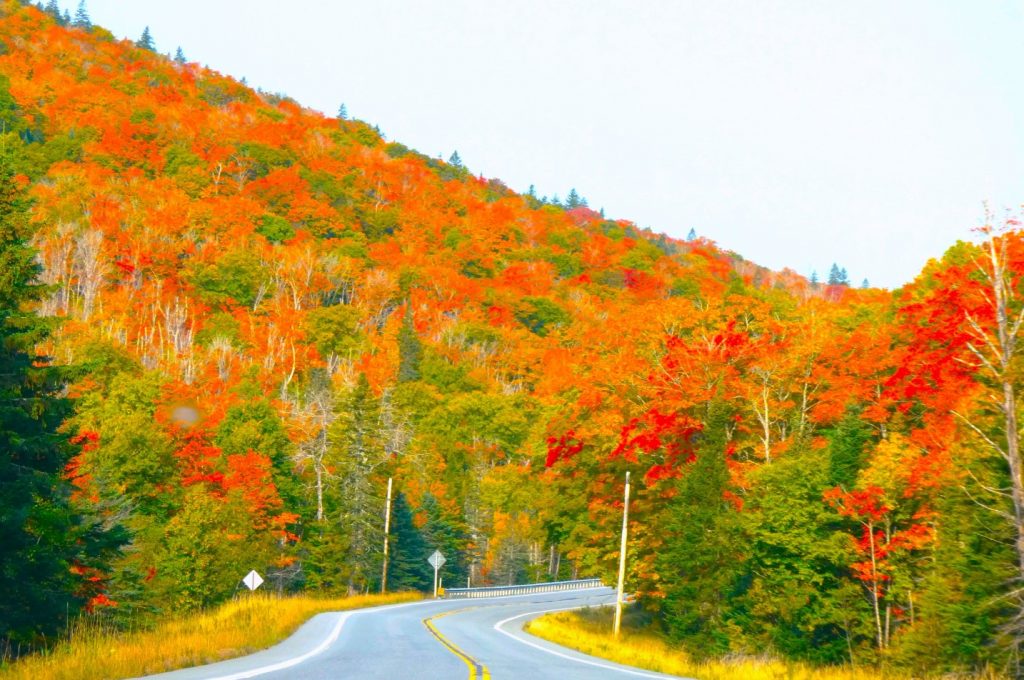
By John Chen–
(Editor’s Note: San Francisco Bay Times sports columnist John Chen is an avid traveler. This year he has been looking back on some of the places he visited last year. See the February 8, 2024, and February 22, 2024, issues of the Bay Times for parts one and two, and look for the final installment of this series later this month.)
Puerto Vallarta, Mexico
It is no secret that Puerto Vallarta has become the preferred LGBTQ+ travel destination in Mexico. With welcoming locals and culture, stunning beaches and sunsets, high energy nightlife, authentic cuisine and sweet tropical fruits aplenty, beautiful waterfalls and adventurous water sports, as well as natural eco parks and botanical gardens, Puerto Vallarta has something for everyone. At the heart of this amazing coastal city is Zona Romantica, an old town district proud of its heritage, history, acceptance, expression, and the LGBTQ+ community.

Although 2023 wasn’t our first-time visiting Puerto Vallarta, it was the first time we explored the nature side of this exciting destination. I would like to highlight a couple of amazing and fun experiences: 1) boat tour, and 2) river hike and eco park.
Jet’s Naked Boat Tour
While thumbing through potential adventurous things to do in Puerto Vallarta, I stumbled upon Jet’s Naked Boat Tour. Yes, you read that correctly; it is a real strip down, bare-all, near seven-hour boat tour of Southern Banderas Bay eventually docking at a secluded beach where all the passengers including the tour guides frolic in crystal clear, turquoise blue water in the buff. On this amazing excursion, we met fun loving gay men from all over including Mexico, Sweden, Minnesota, Canada, and, of course, California. Nothing bonds men together more than being completely naked out in one of the most picturesque destinations. Activities on this tour included snorkeling, swimming, sunbathing, massage on the beach, exploring a “Lover’s Cave,” and light rock climbing.

Waterfall Hike and Nogalito Eco Park
In Puerto Vallarta, we hired a private gay local tour guide because we wanted to see, feel, learn, and taste what the area has to offer, especially hidden gems. Our guide, Ulises Mata, introduced several local favorites and took us on a hidden waterfall hike that followed a fast-running creek upstream through a fairly dense tropical jungle. Due to recent storms, the hiking trail upstream was partially washed out, so we decided to hike alongside the babbling creek, often times scaling large rocks and boulders as well as treading through waist-deep, cool, clear, and fast-moving water. The hike was definitely challenging and such an adrenaline rush!
After the hike, Ulises took us to Nogalito Eco Park for a stroll and a much-needed, delicious Mexican lunch. Although tabbed as an amusement park, Nogalito Eco Park is more of a lush tropical nature park with a zipline and a restaurant. Walking through the jungle and listening to the songs and rustling of native wildlife gave us a great sense of awe and wonder.
Old Québec City, Québec, Canada
A UNESCO World Heritage Site, Old Québec City, according to UNESCO, “was founded by the French explorer Champlain in the early 17th century … [and] is the only North American city to have preserved its ramparts … with numerous bastions, gates, and defensive works. The Upper Town, built on the cliff, has remained the religious and administrative [center], with its churches, convents, and other monuments like … the Citadel and Château Frontenac. Together with the Lower Town and its ancient districts, it forms an urban ensemble which is one of the best examples of a fortified colonial city.”

In the fall of 2023, I took the opportunity to immerse in the historic and charming French-Canadian treasure, Old Québec City, which came highly recommended by my French-Canadian friends. Upon entering the old walled city from the western side, or the Upper Town, the architecture immediately showcased French colonial design of yesteryear lining the narrow cobblestone streets. At the eastern end of Upper Town lies the Citadel and the famed Chateau Frontenac, perched atop Cap Diamant, 333 feet above the Lower Town and Saint Lawrence River.
A few locals shared with us that the natural cliff barrier, which separates the upper and lower Old Québec City, became the best defense against any potential intruders and attacks from the Saint Lawrence River to the east. Scaling the vertical cliff (333 feet) was nearly impossible with 17th–19th century technologies. Nothing invented at the time could conquer the sheer height. And if, somehow, the enemy reached the top, they would be met instantly with strategically positioned cannons and waiting military at the Citadel.
While the Upper Town housed museums, architecture tour de force, government, and clergy, the Lower Town displayed and preserved an old world where the people lived, thrived, socialized, and conducted trade. Together, the two towns form a unique geography and feel for this world heritage site that is well worth the visit.
Fall Foliage, Jackman, Maine
Last fall my buddy Thom Johnson invited me to visit his family cabin in Jackman, a small town of 700 people in the North Western Mountains of Maine. Thom really wanted me to experience the natural beauty of his home state and live the way people did a couple of hundred years ago. Always ready for any adventure (plus, I’ve always wanted to see amazing fall colors in Northern New England), I couldn’t pass up the opportunity.
I flew into Portland, Maine, and got into my rental minivan. I originally reserved an SUV, but the rental agency offered a free tank of gas and a few other minor perks if I took the minivan. So, my inner soccer mom got into my Chrysler Pacifica, and headed up I-95 and U.S. Hwy 201 north to Jackman. According to the town’s website, “US Route 201 is also known as ‘Old Canada Road National Scenic Byway.’ It winds right alongside the Kennebec River, Wyman Lake, the Dead River, and vast forests.”

In addition, “Jackman is … the midpoint of the Kennebec-Chaudiere International Scenic Corridor. A journey through the Kennebec-Chaudiere International Scenic Corridor rewards the visitor with a wealth of historic attractions, scenic drives, and outstanding outdoor recreation.”
Arriving in Jackman, Thom greeted me with open arms and great enthusiasm. He gave me a tour of his family property and proudly showed me the second cabin he manually built, where we would be staying. I admire Thom’s perseverance. Whatever he sets his mind to, he will find a way to get it done. My only question at the time was, “Where’s the bathroom and running water?” Apparently, those things don’t exist on his property, at least not yet. We pretty much used the great outdoors and “showered” in the buff with all the animals watching. A very interesting anecdote I learned was that many people in Jackman and the surrounding mountains rely on natural spring water for drinking and consumption. In fact, there is a designated area off Highway 201, in the mountains, where people go to fill jugs of pure and delicious spring water.
After I got acclimated, Thom took me on the backroads to be one with nature where mountains, forests, rivers, lakes, and waterfalls are nearly as pure and untouched as freshly fallen show. We saw stunning fall colors, although my trip turned out to be just one week ahead of full color foliage. Nevertheless, I did get to see first-hand an amazing canvas of bright red, orange, and yellow mixed with green covering the Northwest Mountains and valleys. Our road trip concluded at the beautiful Moosehead Lake, the largest lake in Maine shaped like, you guessed it, a moose head complete with antlers.
Eastern State Penitentiary, Philadelphia, Pennsylvania

Out here on the West Coast, we have the iconic, seemingly inescapable, bloody, and paradoxically scenic maximum security prison Alcatraz. On the East Coast, the Eastern State Penitentiary has struck fear, terror, insanity, and madness for all those incarcerated. Although both prisons are now defunct, the intrigue of their unforgiving past lures millions of visitors to each attraction every year.
From the Travel to the History Channels, virtually every America’s “most haunted, scariest, creepiest” show at one time or another featured the Eastern State Penitentiary due to its “menacing, medieval façade built to intimidate,” and the dark penal reform philosophy of incarceration that drove prisoners mad. When it opened in 1829, the prison implemented the most progressive deterrent for criminals, solitary confinement with only a small skylight to penitent, giving birth to the name penitentiary. For those unwilling or resisting, they were punished with suffocating restraint, causing mutilation and sometimes blunt force trauma. Back then, it was dubbed “the radical nineteenth-century prison designed to create social change.”
Today, Eastern State Penitentiary stands in partial ruin; it is a historic landmark and a reminder of a reform philosophy gone very wrong. Every October, the penitentiary hosts the highly anticipated and immensely popular Terror Behind the Walls haunted house-style scare fest welcoming Halloween. Last year, while visiting Philadelphia in October, fortuitously, I got to attend this horror festival with my brother-in-law, Steve Maylath. Although we had an amazing time, let me tell you, the Eastern Penitentiary is as advertised and extremely chilling, creepy, and haunting, especially after dark.
John Chen, a UCLA alumnus and an avid sports fan, has competed as well as coached tennis, volleyball, softball, and football teams.
Travel
Published on April 4, 2024
Recent Comments